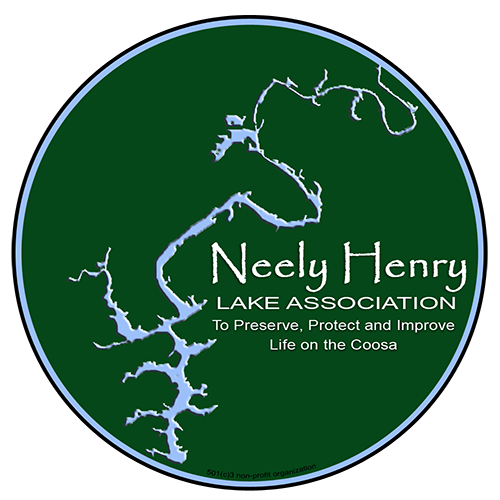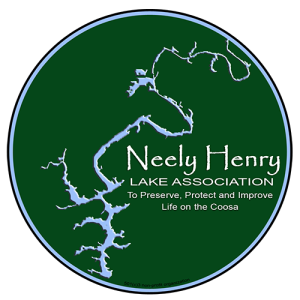About Neely Henry Lake
Neely Henry Lake in Alabama was impounded June 2, 1966 and named for H. Neely Henry, a senior executive vice-president of Alabama Power Company. The dam impounds 11,200 acres (45.3 km²), approximately 77.5 miles long, with 339 miles of shoreline. Neely Henry dam is one of seven dams on the Coosa River.
The nearest town to the dam is Ohatchee. Other cities along the Lake are Gadsden, Rainbow City, Southside and Hokes Bluff.
Lake Neely Henry is an Alabama Power lake with an 72,900 kilowatt generating capacity. It is an excellent recreational lake with fishing opportunities for largemouth bass, spotted bass, bluegill and other sunfish, crappie, catfish, striped bass, hybrid and white bass. Alabama Power maintains three public access sites on the lake.
The major tributaries to Neely Henry Lake are: Ballplay Creek, Cove Creek, Henley Creek, Canoe Creek, Permita Creek, Green’s Creek, Beaver Creek, Ottery Creek, Shoal Creek.
Neely Henry Lake has two, distinct configurations:
- From below Weiss Dam to below Gadsden, the Lake has the look of a free-running lake: high banks and is fairly narrow (it basically follows the channel of the Coosa River). This part of the lake is not as developed as the lower section and has the feel of a remote river with woods on either side.
- Below Gadsden, near Rainbow City, the Lake begins to widen and there is more development, but the lake itself is pretty uncrowded, especially during the week. As you approach the dam near Ohatchee, the Lake widens even more. (If you are new to the Lake, it is suggested that you get a good map showing the channel and shallower areas of the lake. Even in some wide-open areas, there are shallow areas, especially during the winter draw-down of water).
Short History of the Coosa River
The Coosa River is one of Alabama’s most developed rivers. It begins at the confluence of the Oostanaula and Etowah rivers in Rome, Georgia, and ends just northeast of the Alabama state capital, Montgomery, where it joins the Tallapoosa River to form the Alabama River just south of Wetumpka. Around 90% of the Coosa River’s length is located in Alabama.
Most of the river has been impounded, with Alabama Power maintaining seven power dams on the Coosa River.
Native Americans had been living on the Coosa Valley for millennia before Hernado de Soto and his men became the first Europeans to discover it in 1540. The Coosa Chiefdom was one of the most powerful chiefdoms in the southeast at the time.
Over a century after the Spanish left the Coosa Valley, the British established heavy trading ties with the tribes around the late 17th century, much to the dismay of France. The French believed that the Coosa River was a key gateway to the entire South and they earnestly wanted to control the valley, since the main transportation of the day was by boat. The convergence of the Coosa and Tallapoosa rivers was the gateway to Mobile Bay, which was where the French docked coming and going from their home countries.
In the 18th century, almost all European and Indian trade in the southeast ceased during the tribal uprisings brought on by the Yamasse War against the Carolinas. After a few years, the Indian trade system was resumed under somewhat reformed policies. The conflict between the French and English over the Coosa Valley, and much of the southeast in general, continued. It wasn’t until the Treaty of Paris was signed in 1763, ending the French and Indian, that France relinquished its holdings east of the Mississippi River.
After the United Staes won its independence, the Coosa Valley was home to the Creeks and the Cherokee. After the Fort Mimms Massacre, General Andrew Jackson led American troops, along with Cherokee allies, against the Creeks in the Creek war, which culminated in the Creek defeat at the Battle of Horeshoe Bend.
The Coosa River played an important role into the early 20th century as a commercial waterway for riverboats along the upper section of the river for 200 miles south of Rome. However, shoals and waterfalls such the Devil’s Staircase along the river’s lowest 65 miles blocked the upper Coosa’s riverboats from access to the Alabama River and the Gulf of Mexico.

